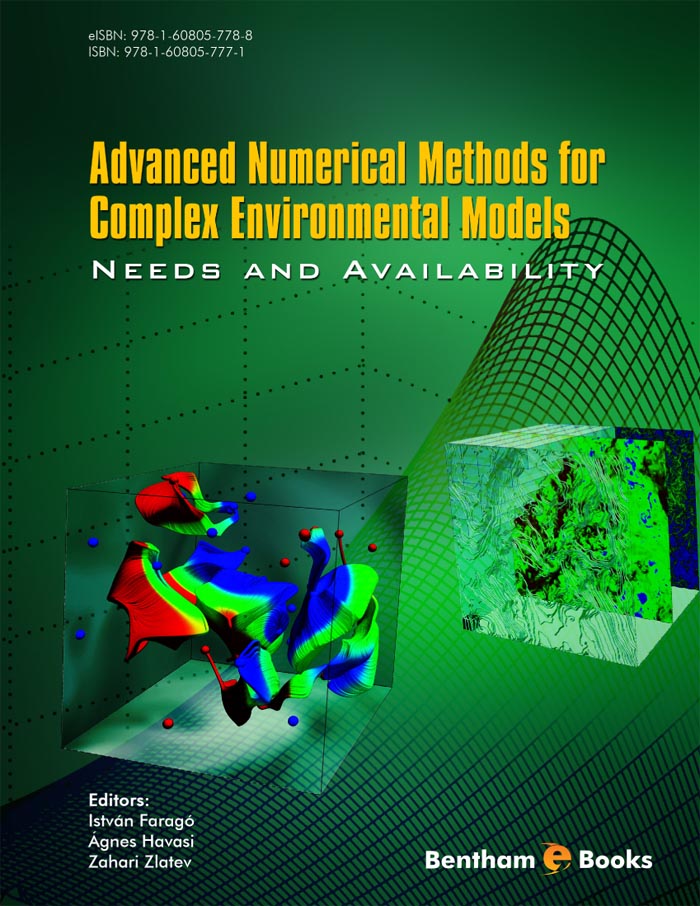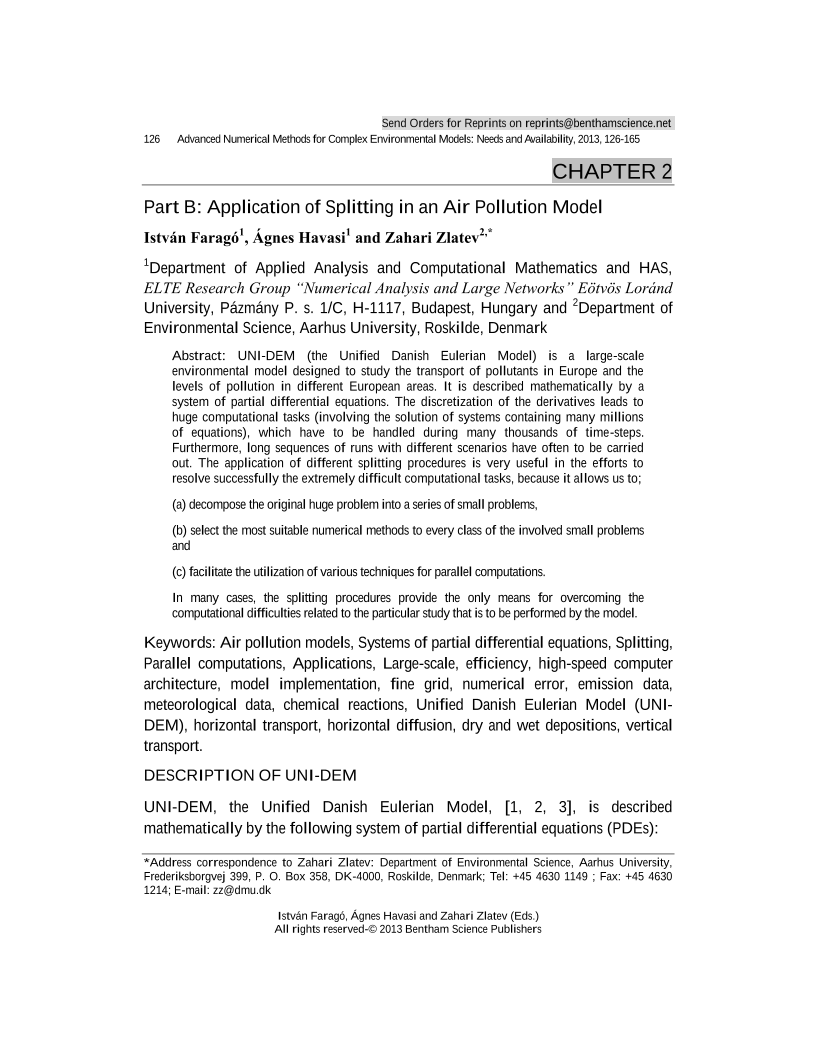Part B: Application of Splitting in an Air Pollution Model

- Authors: István Faragó1, Ágnes Havasi2, Zahari Zlatev3
-
View Affiliations Hide Affiliations1 Department of Applied Analysis and Computational Mathematics and HAS, ELTE Research Group “Numerical Analysis and Large Networks” Eötvös Loránd University, Pázmány P. s. 1/C, H-1117, Budapest, Hungary 2 Department of Applied Analysis and Computational Mathematics and HAS, ELTE Research Group “Numerical Analysis and Large Networks” Eötvös Loránd University, Pázmány P. s. 1/C, H-1117, Budapest, Hungary 3 National Environmental Research Institute, Aarhus University, Frederiksborgvej 399, P. O. Box 358, DK-4000, Roskilde, Denmark
- Source: Advanced Numerical Methods for Complex Environmental Models: Needs and Availability , pp 126-165
- Publication Date: December 2013
- Language: English
Part B: Application of Splitting in an Air Pollution Model, Page 1 of 1
< Previous page | Next page > /docserver/preview/fulltext/9781608057788/chapter-5-1.gif
UNI-DEM (the Unified Danish Eulerian Model) is a large-scale environmental model designed to study the transport of pollutants in Europe and the levels of pollution in different European areas. It is described mathematically by a system of partial differential equations. The discretization of the derivatives leads to huge computational tasks (involving the solution of systems containing many millions of equations), which have to be handled during many thousands of time-steps. Furthermore, long sequences of runs with different scenarios have often to be carried out. The application of different splitting procedures is very useful in the efforts to resolve successfully the extremely difficult computational tasks, because it allows us to;
(a) decompose the original huge problem into a series of small problems,
(b) select the most suitable numerical methods to every class of the involved small problems and
(c) facilitate the utilization of various techniques for parallel computations.
In many cases, the splitting procedures provide the only means for overcoming the computational difficulties related to the particular study that is to be performed by the model.
-
From This Site
/content/books/9781608057788.chapter-5dcterms_subject,pub_keyword-contentType:Journal -contentType:Figure -contentType:Table -contentType:SupplementaryData105

